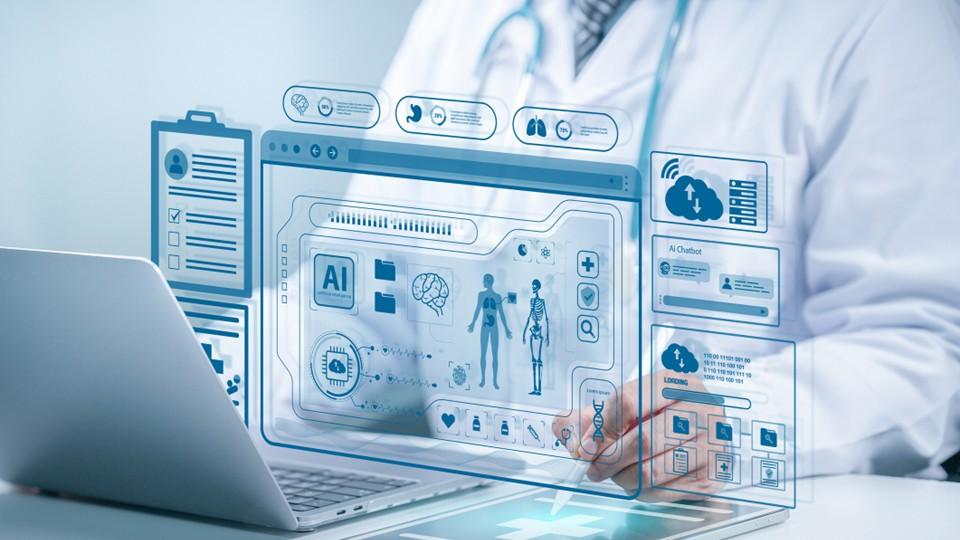Harnessing video data to tell the real-world story

The trend towards consuming more information visually, coupled with the capacity of smartphones to capture quality video, offers researchers the opportunity to mine more data from subjects who are increasingly willing to share powerful insights via mobile devices. Damian Eade examines the issues.
In 1979, the band The Buggles stormed the charts with the hit song ‘Video killed the radio star’, inspired by the fact that video technology, which in those days was VHS recorders and basic, bulky camcorders, was on the verge of changing everything.
Fast forward nearly four decades and digital video, particularly on mobile, is set to transform everything. This time, though, the impact is going to be much more far-reaching. So what is it about video that is exciting everyone, and what does it mean for market research, and in particularly healthcare market research?
In 2014, 64% of all consumer internet traffic was video, with that figure predicted to rise to 80% by 2019. On Facebook, according to CEO Mark Zuckerberg (and he should know), that figure is set to rise to 90% by 2018.
In the consumer world video is increasingly becoming the medium through which we communicate and consume information. But what about in the world of business? The same trends are emerging. A total of 75% of executives are watching work-related video content every week, and 59% would rather watch a video than read an article. Plus 64% of marketers expect video to dominate their strategies in the near future.
“Around a third of doctors are using YouTube for work-related purposes”
Healthcare cannot ignore these trends. Cello Health’s own Digital Health Debate report showed that around a third of doctors are using YouTube for work-related purposes, with significant numbers using video-based content for their professional activities.
Furthermore there are applications within healthcare where video is even more readily accessed by physicians, with 78% of doctors responding that they would readily view video content as part of a mobile research programme. Also consider the evolution of the medical congress, with many key conferences offering video-based virtual access to doctors, as well as video-based medical education packages created at the events. Increasingly video is a necessary part of a doctor’s daily life and a preferred method of information transfer.
Many of us grew up in a text-based society, but video is how more and more people engage today. Appealing to both sight and sound, videos are engaging, and we remember them. It is hard to talk about video without talking about mobile, because the explosion of video has been underpinned by the ubiquity of smartphones. With 1.4 billion smartphones sold in 2014 alone, they have permeated every aspect of our lives and changed the way we do business.
Everyone has the technology in their pocket to be a film-maker, capturing video content whenever and wherever they are, while at the same time being able to consume, share and digest videos on the same mobile device. Mobiles mean that social networks and newsfeeds are with us 24/7, pumping video in front of our eyes (and with autoplay functionality this can be without our choosing).
Of course, video is not new, and mobiles – even smartphones – have been around for some time, but the convergence of these technologies is allowing people to do new things. In terms of brand perceptions and corporate marketing, it is clear that harnessing this power can be game-changing, but what does it mean for market research?
“Videos have impact because they can bring the customer into the room”
When it comes to feeding back research results, it is the video clips that people walk out of the boardroom talking about. They have impact because they can bring the customer into the room, presenting directly the views of the doctor, nurse, a patient or a caregiver.
Until recently, a camera crew was needed in the room to create a high quality recording. But now we all have HD-quality camcorders in our pockets and can capture the world of customers.
Importantly, alongside this leap in quality, researchers can be much less intrusive. Everyone can be a film-maker now, and that includes our customers; we can hand over power to our participants and ask them to show us the details of their lives. This is more than just self-ethnography; they can tell us their stories, what they have done today, reflect on their experiences, and show us their environments.
Researchers are able to sift their contributions to find the extraordinary in the ordinary. We can engage with participants in different ways, doing more on their terms, allowing them to open up with real emotional intensity. The results can be very powerful and can be used in research projects to add depth, texture and richness.
Yet this is not just about the technology itself. It is more about the way that it has been adopted by society at large. People are more comfortable, more confident and more able to share. They will film themselves on a bus and share it, because it’s more acceptable and easy to do. It is dynamic content, with emotional responses from participants.
Drowning in content
With the advent of new video data the whole research model is changing. Traditionally research is reductive in nature, boiling down lots of information into key findings. But the video model is generative, encouraging participants to open up and provide more data. This can create a goldmine, a huge vault of data, but it may mean that there is so much information that valuable material may be left buried. That is perhaps the biggest challenge of this approach.
Once again, technology can provide a solution here – ironically, by reverting video content to text. Using innovative capture platforms, video can be automatically transcribed, with every word becoming a tag, to enable quick and effective searches of the spoken word. In addition, we can also tag what we see – the non-verbal cues and even emotions which are subtly expressed visually, so the searchability is much richer than it would be for simple, text-based data.
The currency of text is rapidly eroding, and we are entering a visual world at a rate of knots. Apps like Snapchat have turned Generation Z – the millennials – into a cohort comfortable with the ephemerality and transience of information and communication.
All of this is happening right now, and researchers must embrace not just the technology but, more importantly, the cultural changes which have put video at the centre of how people communicate and share information. Video may have killed the radio star, but it can make stars of savvy market researchers.
Read more in the Cello Health Digital Health Debate report.
About the author:
Damian Eade is global head of Digital at Cello Health Insight. He can be contacted at deade@cellohealth.com, on Twitter: @D1479, or via the Cello Health Insight website: http://www.cellohealthinsight.com
Read more from Cello Health:












